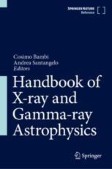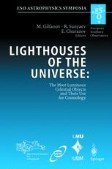Search
Search Results
-
A near-UV reconnaissance of metal-poor massive stars
We use synthetic model spectra to investigate the potential of near-ultraviolet (3000-4050 Å) observations of massive O-type stars. We highlight the...

-
The photometric variability of massive stars due to gravity waves excited by core convection
Massive stars die in catastrophic explosions that seed the interstellar medium with heavy elements and produce neutron stars and black holes....

-
The s process in massive stars, a benchmark for neutron capture reaction rates
A clear definition of the contribution from the slow neutron-capture process (s process) to the solar abundances between Fe and the Sr-Zr region is a...

-
Quark-hadron deconfinement phase transition and massive hybrid stars
The stellar configurations of quark stars have been studied using perturbative QCD (pQCD). The effective equation of state (EoS) for cold quark...

-
Near-Infrared Spectroscopy of Deeply Embedded, Young Massive Stars
Using the highest spectral resolution (R ~ 10,000) currently available in the near-infrared on the Very Large Telescope, we have obtained K-band...
-
X-ray Emission of Massive Stars and Their Winds
Most types of massive stars display X-ray emission that is strongly affected by the properties of their stellar winds. Single nonmagnetic OB stars...
-
Quark stars in massive gravity might be candidates for the mass gap objects
We have investigated the structural properties of strange quark stars (SQSs) in a modified theory of gravity known as massive gravity. In order to...

-
VLT/ISAAC Spectroscopy of Young Massive Stars Embedded in Ultra-Compact H II Regions
Using ISAAC mounted at the Very Large Telescope, we have obtained medium-resolution K-band spectra of newly formed massive stars, which are deeply...
-
Exploring Massive Neutron Stars Towards the Mass Gap: Constraining the High Density Nuclear Equation of State
AbstractDue to the high-density nuclear matter equation of state (EOS) being as yet unknown, neutron stars (NSs) do not have a confirmed limiting...

-
Winds from Massive Stars and the Afterglows of $\gamma$ -Ray Bursts
The observed distribution of optical afterglows with respect to their host galaxies may suggest that some gamma-ray bursts (GRBs) are associated with...
-
Evolution and Nucleosynthesis of Metal-Free Massive Stars
We calculate presupernova evolutions and supernova explosions of massive stars (...
-
Spectroscopy of Massive Stars
One of the most extensively used tool to study massive stars is spectroscopy, in particular in the optical part of the spectrum. Spectroscopy allows...
-
Quasi-stationary sequences of hyper-massive neutron stars with exotic equations of state
In this work, we study the effect of differential rotation, finite temperature and strangeness on the quasi-stationary sequences of hyper-massive...

-
Hot Massive Planets Around Nearby Young Stars – A Search with NACO at the VLT
The detection of massive planets (3-10 M J ) around nearby (D ≤ 50 pc) young late-type stars (10-200 Myr) is possible...
-
The Slow Merger of Massive Stars
We study the complete merger of two massive stars inside a common envelope and the subsequent evolution of the merger product, a rapidly rotating...
-
Making waves in massive star asteroseismology
Massive stars play a major role not only in stellar evolution but also galactic evolution theory. This is because of their dynamical interaction with...

-
Evolution and Explosion of Very Massive Primordial Stars
While the modern stellar IMF shows a rapid decline with increasing mass, theoretical investigations suggest that very massive stars (...
-
Evolution and Nucleosynthesis in Massive Stars of Zero Metallicity
We follow the evolution of rotating, zero metallicity stars in the mass range 15-250 M...
-

